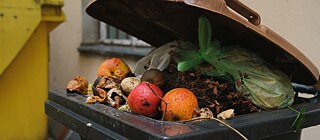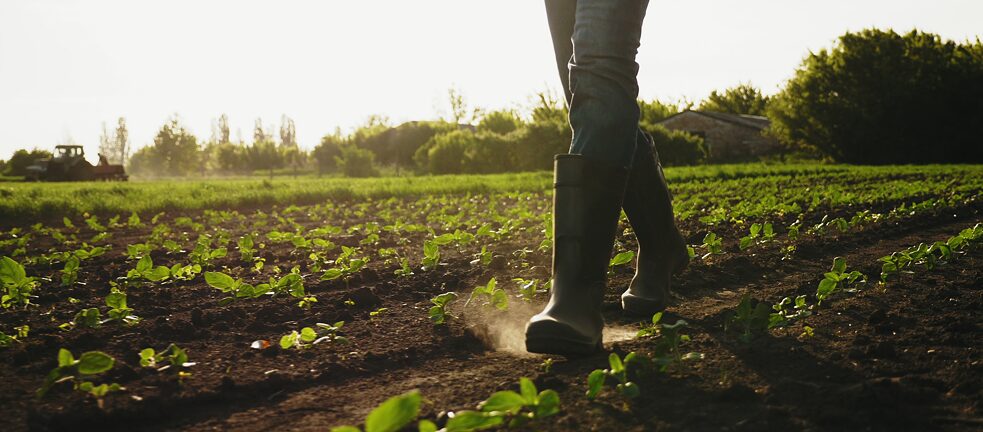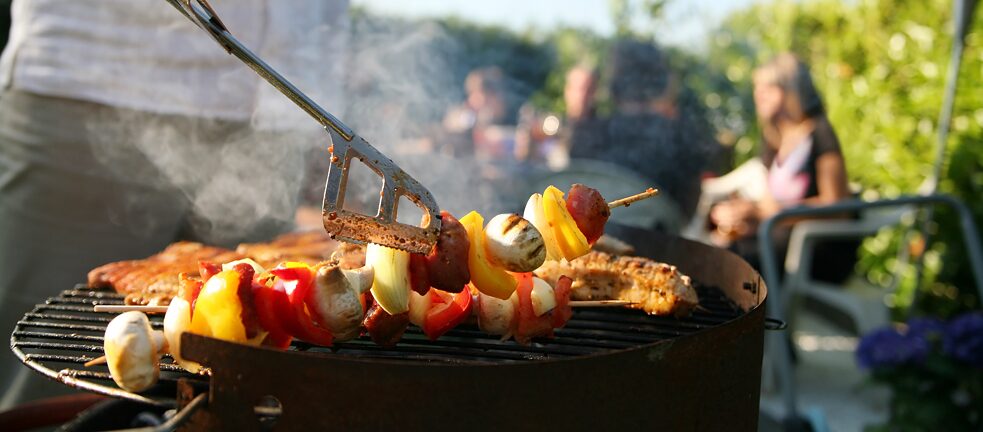Food Waste AI Saving Food From the Bin

A lot of food can be saved from the bin. | Photo (detail): © Adobe
Germany has committed to halving food waste by 2030. Researchers at the Fraunhofer Institute for Casting, Composite and Processing Technology IGCV are looking for artificial intelligence approaches that could get us closer to this goal.
According to a study conducted by the Thünen Institut, a German research institute for rural areas, forests and fisheries, 12 million tons of food, which are about 40 times the weight of the Cologne Cathedral, end up in the rubbish in Germany every year. A bit over half of it (6.1 million tons) comes out of private households, which works out to an average of 75 kg per person. Another third of all food waste happens during the production process: 1.4 million tons are lost in production, and another 2.2 million tons in processing.In the United Nations’ 2030 Agenda, Germany has committed to reducing its food waste by half in the coming years. To achieve this goal, the German government is relying on the potential of algorithms: In a project funded by the German Federal Ministry for Economic Affairs and Energy, the Fraunhofer IGCV is working in a consortium of 18 partners from industry and research to apply methods from the field of artificial intelligence (AI) for more sustainable food handling.
Systematically Preventing Waste
Overproduction, quality fluctuations and consumer demand for attractive food are a few of the reasons food ends up in the bin. Though some of the causes seem surmountable, we have not yet managed to come to grips with these problems systematically because the food value chain is a complex system. From raw material producers and farmers to (mostly industrial) processing, distributers and retailers, many people and steps are involved before a bread roll finally ends up in our hands. Understanding the entire process and all the factors is challenging because it involves volumes of data that simply overwhelm the capacities of the human brain. AI and machine learning, however, could help us make sense of the data and thus optimize even highly complex processes in production planning, sales planning, and plant control. The food value chain is a complex system involving many people and steps from raw material producers and farmers through to processing, distributors, and retailers.
| Photo (detail): © Adobe
“AI can identify correlations in large amounts of data that are not obvious to a human being,” Fraunhofer IGCV scientist and co-developer of the REIF platform Patrick Zimmermann explains. REIF stands for Resource-Efficient, Economic and Intelligent Foodchain. The REIF project explores the entire value chain, from agricultural production to sales at the supermarket checkout, looking for optimisation potential. “Overproduction and waste can be avoided,” his colleague Philipp Theumer is confident - by better forecasting food demand and reducing losses resulting from poor quality, for instance.
The food value chain is a complex system involving many people and steps from raw material producers and farmers through to processing, distributors, and retailers.
| Photo (detail): © Adobe
“AI can identify correlations in large amounts of data that are not obvious to a human being,” Fraunhofer IGCV scientist and co-developer of the REIF platform Patrick Zimmermann explains. REIF stands for Resource-Efficient, Economic and Intelligent Foodchain. The REIF project explores the entire value chain, from agricultural production to sales at the supermarket checkout, looking for optimisation potential. “Overproduction and waste can be avoided,” his colleague Philipp Theumer is confident - by better forecasting food demand and reducing losses resulting from poor quality, for instance.REIF uses various software systems to collect and abstract data. These include data from the value chain, and even weather data, as it significantly influences consumer purchasing behaviour. In future, AI might be able to flexibly regulate the number of animals slaughtered and the price of meat for the grill so that less is left in the cooler on a rainy weekend. “The forecasts are based on a wide range of data sources, including Google Trends and data from the merchandise system,” Zimmermann explains.
An Ecosystem For More Know-How
REIF is also finding ways to minimise waste in food production. One option is to optimise shelf life, as Zimmermann explains: “The temperature and length of the mixing process of raw meat influence the best-before date of the final meat product. By using AI algorithms to minimise the energy added during mixing, we can extend the best-before date and thereby optimise the length of saleability at the supermarket.” The REIF software system also incorporates weather data, and AI might one day be able to flexibly regulate the quantity of meat produced for the grill, for example
| Photo (detail): © Adobe
REIF project partners are currently in the process of establishing an IT ecosystem, i.e. a digital platform and a network of all relevant partners. It will feature various AI applications and facilitate the uniform exchange of data. The conceptual design phase is complete, and the platform is now ready for the first practical tests.
The REIF software system also incorporates weather data, and AI might one day be able to flexibly regulate the quantity of meat produced for the grill, for example
| Photo (detail): © Adobe
REIF project partners are currently in the process of establishing an IT ecosystem, i.e. a digital platform and a network of all relevant partners. It will feature various AI applications and facilitate the uniform exchange of data. The conceptual design phase is complete, and the platform is now ready for the first practical tests.In the long term, companies will be able to share data and their own AI algorithms on the REIF marketplace. After all, the more data you feed it, the faster and better AI can learn. This exchange could increase the know-how of each individual company while identifying increasingly effective options for handling food responsibly and sustainably.
0 0 Comments